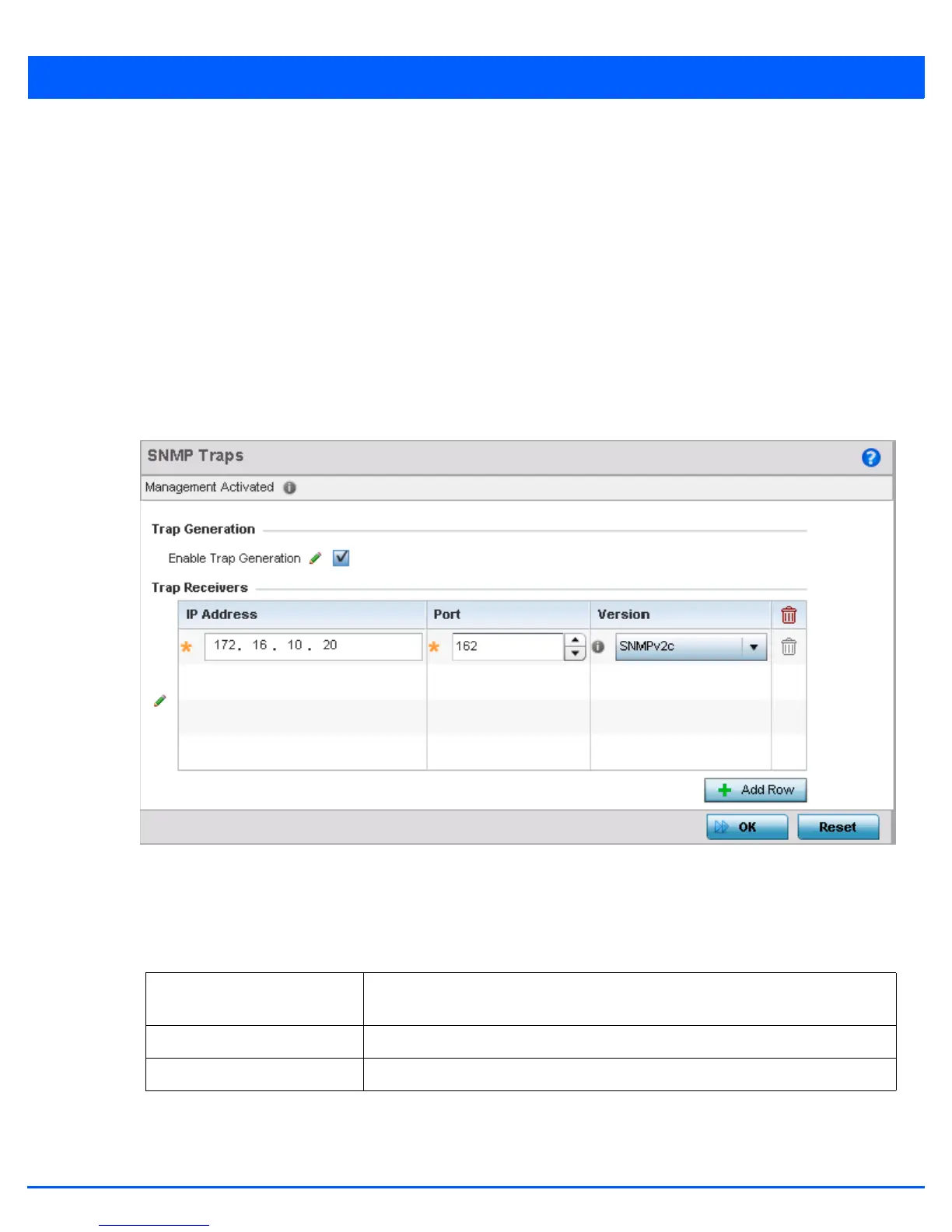10 - 12 WiNG 5.6 Access Point System Reference Guide
10.5 SNMP Trap Configuration
Management Access
An access point can use SNMP trap receivers for fault notifications. SNMP traps are unsolicited notifications triggered by
thresholds (or actions) on devices, and are therefore an important fault management tool.
A SNMP trap receiver is the SNMP message destination. A trap is like a Syslog message, just over another protocol (SNMP).
A trap is generated when a device consolidates event information and transmits the information to an external repository. The
trap contains several standard items, such as the SNMP version, community etc.
SNMP trap notifications exist for most operations, but not all are necessary for day-to-day operation.
To define a SNMP trap configuration for receiving events at a remote destination:
1. Select Configuration > Management.
2. Select SNMP Traps from the list of Management Policy options in the upper, left-hand, side of the UI.
Figure 10-6 Management Policy screen - SNMP Traps tab
3. Select the Enable Trap Generation check box to enable trap creation using the trap receiver configuration defined in the
lower portion of the screen. This feature is disabled by default.
4. Refer to the Trap Receiver table to set the configuration of the external resource receiving trap information. Select Add
Row + as required to add additional trap receivers. Select the Delete icon to permanently remove a trap receiver.
5. Select OK to update the SNMP Trap configuration. Select Reset to revert to the last saved configuration.
IP Address Set the IP address of the external server resource receiving SNMP traps on behalf of
the access point.
Port Set the server port dedicated to receiving traps. The default port is 162.
Version Set the SNMP version for sending SNMP traps. SNMPv2c is the default.

